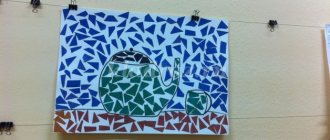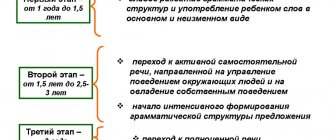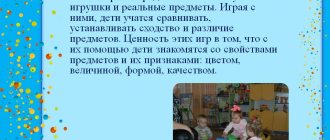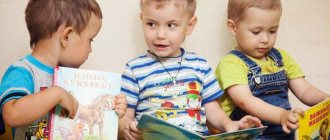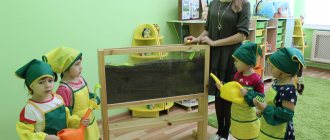Speech therapy games made by teachers and educators are aimed at developing breathing abilities and include articulation exercises and games with air. To form a syllable structure, a variety of activities are used to reinforce the skill of dividing words into syllables. Various variations in the formation of the basic phonemes of the Russian language. Many exercises using visual material are devoted to the development of the articulatory apparatus.
The games proposed below were developed by preschool teachers and speech therapists and are used to increase work efficiency and diversify the material used in the correctional process.
Game aids and material for speech therapy sessions
Contained in sections:
- The work of a speech therapist. Speech therapy 8173
Includes sections:
- Differentiation, automation of sounds. Didactic games 377
- Breathing exercises. Homemade games and manuals 427
- Speech development. Speech games, teaching aids 3275
- Tongue. Speech therapy visual and didactic aids 13
By groups:
- Senior group
- Preparatory group
- Middle group
- Junior group
Showing publications 1-10 of 1397. All sections | Speech therapy games
New
Photo
The best
Outline of a speech therapy subgroup lesson “Educational game “Magic Chest”” Outline of a speech therapy subgroup lesson was developed by speech therapist E.N. Korovkina . Topic: Educational game “Magic Chest” as a means of correction for children with speech disorders. Introduction of games into speech therapy classes . Goal: Timely identification and...
Speech therapy project “Govorusha” to activate the vocabulary and develop coherent speech in children with disabilities through didactic games “The native word is the basis of all mental development and the treasury of all knowledge” K.D. Ushinsky Hypothesis: the richer and more correct a child’s speech, the easier it is for him to express his thoughts, the wider his opportunities for understanding the surrounding reality, the more meaningful and complete...
A set of original speech therapy games “Chamomile Stories”
A set of original speech therapy games “Chamomile Stories” is intended for use in correctional and speech therapy work with children of senior preschool age and is compiled in accordance with the requirements of the federal state educational standard for preschool education, as well as taking into account the age and individual characteristics of preschoolers. A set of original speech therapy games “Chamomile Stories” is intended for use in correctional and speech therapy work with children of senior preschool age and is compiled in accordance with the requirements of the federal state educational standard for preschool education, as well as taking into account the age and individual characteristics of preschoolers.
The manual allows you to comprehensively solve problems in all educational areas: social and communicative development; cognitive development; speech development; artistic and aesthetic development; physical development. Allows you to intensify pedagogical activities aimed at timely and most effectively overcoming speech disorders in children.
Goal: Correction of speech disorders in older preschoolers through game material aimed at developing a respectful attitude and a sense of belonging to one’s family, instilling in children a sense of love and respect for their parents and their native land.
Objectives of the priority educational area “Speech development”
- enrichment of the active vocabulary;
- development of coherent, grammatically correct dialogical and monologue speech;
- development of the sound culture of speech, through the automation of sounds (S, Z, Sh, Zh, R, L), their differentiation, improvement of phonemic hearing;
- listening comprehension of texts from various genres of children's literature;
- formation of sound analytical-synthetic activity as a prerequisite for learning to read and write.
Educational objectives in the integration of educational areas:
"Social and communicative development"
- developing a respectful attitude and a sense of belonging to one’s family.
- introducing children to the customs and traditions of celebrating the holiday “Day of Family, Love and Fidelity”
"Cognitive Development"
- develop cognitive activity, curiosity, and creative thinking of children through familiarization with the history and traditions of the Orthodox holiday “Day of Family, Love and Fidelity”;
- formation of cognitive actions, formation of consciousness; development of imagination and creative activity;
"Physical development"
- improve fine motor skills
The form of organizing children's activities is speech therapy subgroup correctional and developmental games.
The set includes 6 speech therapy games:
- "Daisies for Natasha"
- "Gather the Family"
- "Speech therapy chamomile"
- "Who? Where?",
- "Pure talk"
- Illustrations for the text “Peter and Fevronia”.
"Daisies for Natasha"
Goal: automation of the sound [Ш] in words with different positions, improvement of phonemic hearing, enrichment of the active vocabulary, development of fine motor skills.
Equipment: one A4 playing field, 24 cards with daisies.
Vocabulary material:
- sound [Ш] at the beginning of a word: hat, shampoo, chocolate, fur coat, wardrobe, bumblebee, helmet, washer, box, jester, shorts, hat;
- sound [Ш] at the end of a word: shower, pencil, reed, lily of the valley, baby, mouse;
- sound [Ш] in the middle of a word: cat, frog, parsley, cone, horse, car.
Progress of the game
First option: The speech therapist invites the children to help the boy Misha collect a bouquet of daisies for Natasha. Children take daisies one by one and name the pictures drawn on them, clearly pronouncing the sound [Ш].
Second option: The speech therapist invites the children to help the boy Misha collect only those daisies for Natasha whose name contains the sound [Ш] at the beginning of the word (middle, end). Children take daisies one by one and name the pictures drawn on them, clearly pronouncing the sound [Ш], determine the place of the sound [Ш] in the word.
"Gather the Family"
Goal: automation of sounds [R, L] in words, differentiation of sounds [R - L], improvement of phonemic hearing, enrichment of active vocabulary, formation of a respectful attitude and a sense of belonging to one’s family, development of fine motor skills.
Equipment: one A4 playing field, 18 cards with boys and girls.
Vocabulary material:
- sound [R]: rainbow, daisy, fish, rose, rocket, hand, shell, dew, lynx;
- sound [L]: swallow, puddle, boat, spoon, horse, bow, lily of the valley, moon, bast shoes.
Progress of the game
The speech therapist offers children to help parents find their children. Preschoolers take turns taking cards with boys and girls, calling out the pictures on their costumes, clearly pronouncing the sounds [R - L]. They lay out the cards, correlating the sound in the word with the letter drawn on the tower.
"Speech therapy chamomile"
Goal: development of sound culture of speech, through the automation of sounds (S, Z, Sh, Zh, R, L), their differentiation, improvement of phonemic hearing; enrichment of active vocabulary, formation of cognitive actions, development of fine motor skills.
Equipment: 42 petals, each of which has pictures of objects whose names contain a sound. Six yellow circles with the letters: C,Z,SH,ZH,L,R
Progress of the game
Speech therapist:
Look from the window, There is a chamomile, a drop of sun. Collect petals - sound, try, name it!
A speech therapist distributes petals to playing children.
Children name the picture on their petal, determine whether the given sound is in the word and insert it into the corresponding core. After the daisies are collected, the speech therapist praises the children and asks them to repeat all the words in chorus: “Well done, but you still need to repeat the pictures together.”
Children name the pictures on each daisy, clearly pronouncing the sounds.
Vocabulary material:
- sound [R]: rainbow, fish, rose, rocket, shell, dew;
- sound [L]: swallow, puddle, boat, lily of the valley, moon, palms.
- sound [Ш]: hat, chocolate, chaise longue, shorts, box, flip flops.
- sound [Zh]: beetle, giraffe, acorns, jasmine, toad, vest.
- sound [S]: catfish, juice, sandals, salad, airplane, gardener.
- sound [Z]: hare, umbrella, sunset, castle, tan, tooth.
"Who? Where?"
Goal: development of coherent, grammatically correct dialogical speech; developing the ability to correctly use prepositions, enriching an active vocabulary, developing a respectful attitude and a sense of belonging to one’s family, and developing fine motor skills.
Equipment: one A4 playing field
Vocabulary material : grandfather, grandmother, father, mother, daughter.
Progress of the game
The speech therapist asks the children to name those who are drawn in the picture.
First option: The speech therapist asks the children questions, and preschoolers must answer with a detailed answer.
Who's sitting on the bed?
Who is behind the chair?
Who's at the table?
Who is sitting on the chair?
Who stands between the chair and the bed?
Who is standing in front of the stove?
Second option: The speech therapist asks the children to name where grandfather, grandmother, mother, father, daughter, cat are located.
"Pure talk"
Goal: teaching children to clearly pronounce the given sounds [Ш, С, З, Р, Л] in phrasal speech, at a fast pace.
Equipment: 16 cards with pure sayings and illustrations for them.
A clean talker is a funny short poem, the purpose of which is the deliberate selection of words that are difficult for correct articulation when repeated quickly and repeatedly. Pure speech is also used as a means to correct speech defects in children.
Options for using pure phrases:
- pronouncing pure phrases in turn or in chorus, collectively;
- pronouncing pure phrases with different emotional tones of the voice;
- pronouncing pure sayings on behalf of fairy-tale characters (Karabas Barabas, Pinocchio, etc.);
- pronouncing pure sayings using the ball (simultaneously hitting the floor);
- pronouncing simple sayings using a massage ball.
Illustrations for the text “Peter and Fevronia”
Goal: enrichment of the active vocabulary; development of coherent, grammatically correct dialogical and monologue speech; developing the ability to understand texts from various genres of children's literature by ear; introducing children to the customs and traditions of celebrating the holiday “Day of Family, Love and Fidelity”; develop cognitive activity, curiosity, and creative thinking of children through familiarization with the history and traditions of the Orthodox holiday “Day of Family, Love and Fidelity”; formation of cognitive actions, formation of consciousness; development of imagination and creative activity.
Equipment: 5 A4 illustrations for the text “Peter and Fevronia”.
Progress of the game
The speech therapist invites the children to listen to the story and try to remember it.
In the glorious city of Murom lived and lived Prince Pavel. And he had a brother, his name was Peter. Pavel was in trouble. A snake began to fly to his wife. She complained to her husband, and Paul asked her to find out from the serpent the secret of his death. And the snake said that he was destined to die “from Peter’s shoulder and from his sword.” And Peter decided to help his brother - to destroy the damned serpent. He swung his sword and struck the adversary. But the serpent splashed Peter with its poisonous blood, and Peter’s body was covered with sores. No one could heal Peter from a serious illness. Peter humbled himself and prepared to die. But the Lord advised him: they say, there is a young girl in the Ryazan lands who can heal him.
The prince's servants found a girl named Fevronia. And she said that she could heal the prince, and did not ask for anything as a reward, but after his recovery, the prince must take her as his wife, otherwise the treatment would not work. The prince agreed. And after his healing he took Fevronia as his wife.
They lived happily ever after in love and harmony. And they died on the same day and hour. The holy spouses were buried together near the cathedral church of the Nativity of the Blessed Virgin Mary, and every believer received generous healing here.
So says the legend.
After reading, asks questions:
- In what city did Paul reign?
- What was his brother's name?
- Who flew to Pavel's wife?
- With what help did Peter deal with the serpent?
- What happened to Peter?
- How was Peter healed?
- What was the name of the girl who healed Peter?
After this, he gives the task to arrange the illustrations for the text in order. And then asks to retell the text based on them.

